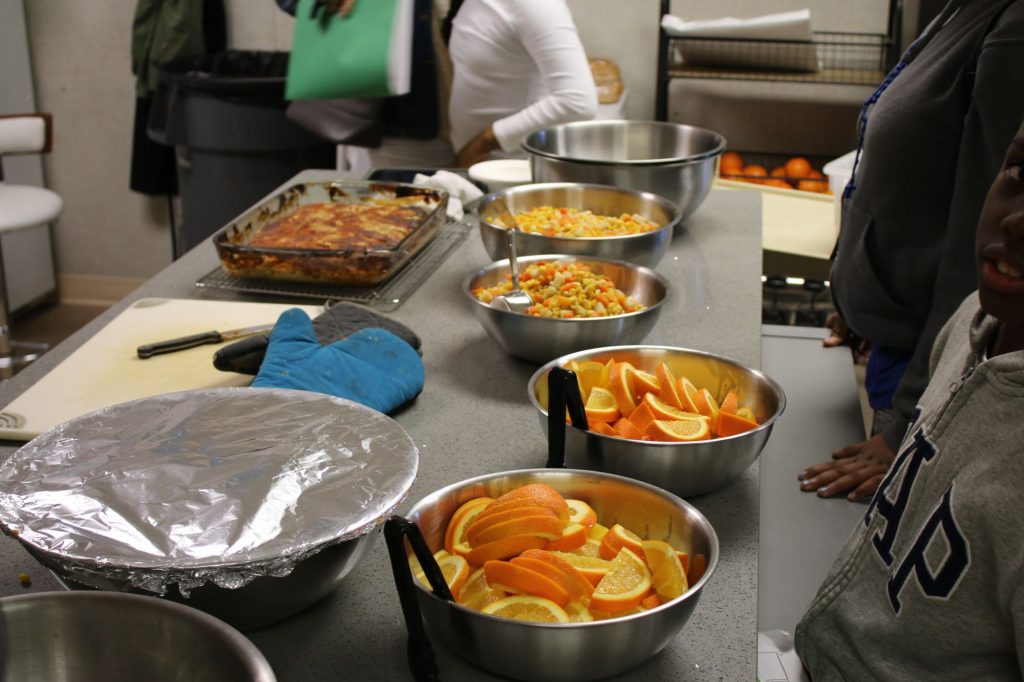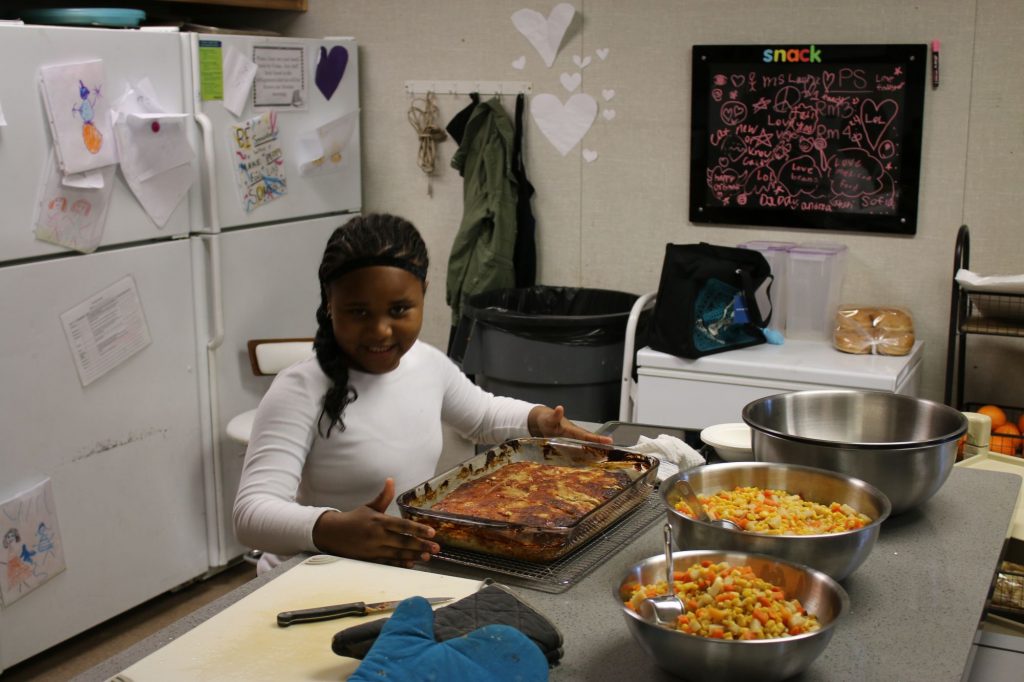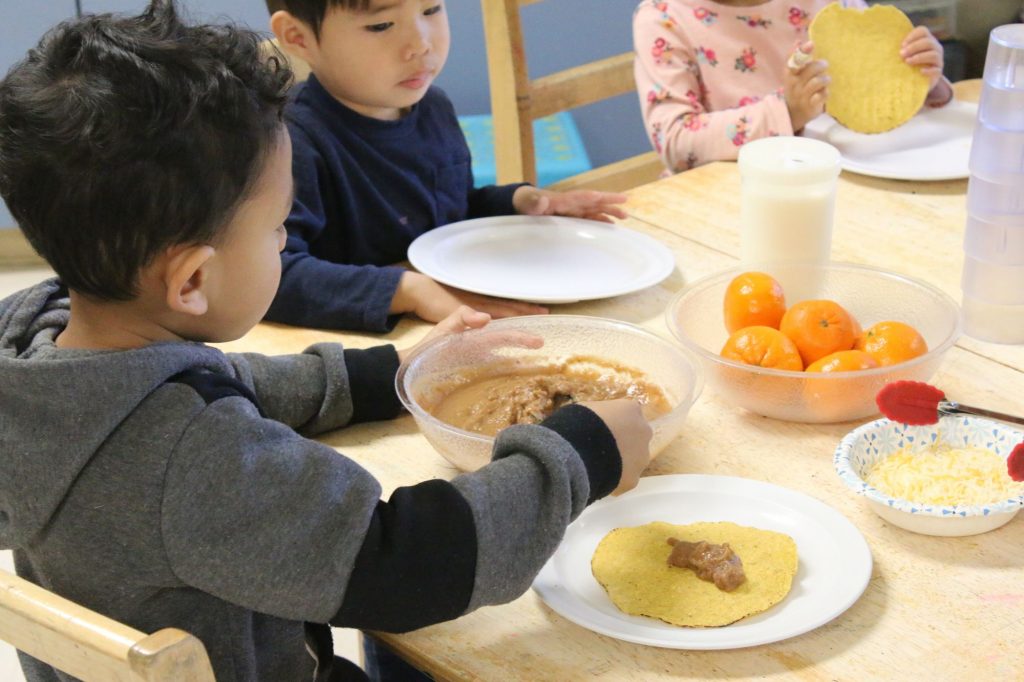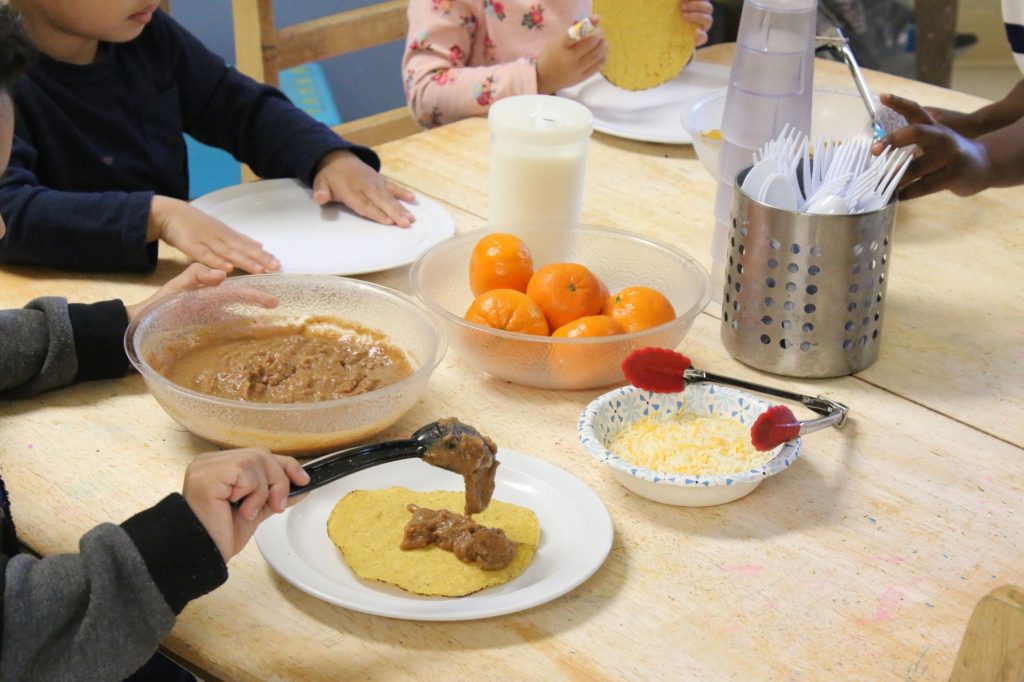April 3, 2020
Continuing to Raise Healthy Eaters During Challenging Times
By Irene Castillo

With 9 out of 10 children worldwide out of school, the COVID-19 pandemic has altered many of our normal routines, including those of our children. Children need as much stability as possible, especially during such uncertain times. They look to us, the adults, to model how they should respond and practice good nutrition during the current pandemic. During this time, we have the opportunity to continue to teach and encourage healthy eating practices that support their health and development. Here are a few ways we are focusing on maintaining stability for our children while building life-long positive practices.
Maintain a Positive Attitude & Cook Together:
You can start by encouraging positive thinking about shopping, cooking and cleaning the kitchen and by creating an environment that nurtures your children’s positive beliefs about their abilities. Cooking with children is a great opportunity to teach them measurements, conversions and cooking skills. Here are some ideas depending on your child’s age and ability:
Two-year-olds are learning to use the large muscles in their arms and are able to do the following activities: scrub vegetables and fruits, carry unbreakable items to the table, wash and tear vegetable greens.
3-5 year olds are able to do the following activities with close adult supervision since their motor skills are still developing: Wash fruits and vegetables in the sink with cool tap water, wipe up tabletops, and mix ingredients like easy-to-mix batters.
Most 6-7 year olds have developed fine motor skills, so they can handle more detailed work, but they will still need food safety reminders. Appropriate tasks include: use a peeler to peel raw potatoes, mangoes and other washed fruits and vegetables, scoop out avocados after sliced in half by an adult, load the dishwasher, rinse and cut parsley or green onions with clean, blunt kitchen scissors.
8-9 year olds are able to acquire a wide range of skills depending on maturity level. Teach the importance of wiping down all surfaces and refrigerating perishables, such as eggs and milk, right away. Appropriate tasks for this age group include: open cans with a can opener, put leftovers in shallow containers and refrigerate within two hours (one hour if it’s warmer than ninety degrees), beat eggs, and check the temperature of meat with a food thermometer.
Kids ages 10 -12 can work independently in the kitchen, but before letting these kids do grown-up tasks on their own, assess whether they can follow basic kitchen rules. These rules include adjusting pan handles over counters to avoid bumping into them, unplugging electrical appliances, and using knives or the oven and microwave safely. Appropriate tasks (with adult supervision): boil pasta, reading a recipe and following each step in order and measuring ingredients accurately, simmer ingredients on the stove, slice or chop vegetables.

Follow an Eating Schedule
Having a food routine provides stability and separates eating from other activities. These timely pauses throughout the day can help your child develop and enhance his appetite regulation skills.
Recommended eating schedule based on a child’s age:
Toddlers and young preschoolers require three meals and up to three snacks per day to meet their nutritional needs for growth and development. Small tummies make it important to offer frequent meals.
School age children need about 3 meals and 1-2 snacks per day. Younger school-age kids (grade K through 2) may need to gradually transition down to two snacks per day. Older school-age kids will do well with one snack per day.
Teenagers are like adults. They do well with three meals and one snack each day, unless they are an athlete requiring more nutrition for athletic performance, or are in a growth spurt and need additional calories and nutrients.

Eat Together as a Family
Sit down and eat together as often as you can. Research tells us that eating three to five family meals per week may improve grades, reduce risk-taking behaviors, prevent weight problems and eating disorders, improve self-esteem and resilience, decreases emotional stress and increases greater sense of well-being. Put prepared food into serving dishes, pass them around the table and let everyone choose which foods they will eat and how much.
Get Creative in the Kitchen
This is a great time to get creative with food, especially when stocks and supplies are a bit limited. There are many different ways to continue to build healthy meals with just a few things in the pantry. You might not think these ingredients could come together to create anything exciting, but with just a few ingredients and a little bit of effort, you can make something enjoyable.
- Burrito bowls, grain bowls, and veggie bowls, are great ways to combine a variety of foods. Make a some whole grains, add fresh, canned or frozen veggies, canned beans, deli meat, or poultry, , salsas, and sauces for a delicious, filling meal that’s as versatile as whatever your favorite pantry staples might be.
- Roast some potatoes with oil, maybe some garlic, or onions, and anything else you have on hand that you think might be tasty. Add leftover chicken you have in the fridge, sausages, tofu, or another source of protein.
- Soup is an easy meal to make when you do not have much in the house. You do not need a recipe, and anything you do not have can be easily substituted. You will need some kind of broth base, veggies, pasta, rice, chickpeas, lentils, quinoa, beans, farro or other grains, meat, fish, tofu, fresh and dried herbs.

Cooking together can be a fun way to teach your child valuable skills, promote good nutrition and make long-lasting memories in the process. By focusing on cooking together, maintaining an eating schedule and allowing time to get creative as a family, you can maintain some stability for your children during this difficult time.
Sources: Academy of Nutrition and Dietetics, American College of Pediatricians, Jill Castle, MS, RDN